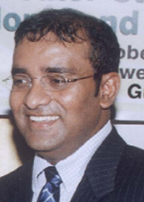Work on the much-vaunted Amaila Falls Hydropower project could commence by mid-next year if an upcoming meeting with Inter-American Development Bank (IDB) officials to discuss financing for the project yields favourable results, President Bharrat Jagdeo announced yesterday.

Speaking at a press conference held at the International Conference Centre, Jagdeo said that this meeting was initiated after he had discussed funding for the long-awaited project with the President of the IDB while he was in Istanbul, Turkey. Jagdeo returned to the country on Sunday after attending the annual meeting of the International Monetary Fund (IMF) and World Bank Group in that country. The upcoming meeting, which has been organized by the President of the IDB Luis Alberto Moreno, will be held early next month in Washington at the IDB. Jagdeo said that since the IDB may supply part of the financing for the project, the organization will play a critical role in organizing financing for it.
According to the President, before he left Guyana for Turkey he had met with the group responsible for the project. He said that the “there was a re-bid of certain portions” of the project which had gone out to tender last November and that the pricing is now in a range that is acceptable.
The President later disclosed that the price for the project would be about US$500 to US$600 million. The developer of the project is Synergy Holdings Inc. while Sithe Global Power is the leading financial group for the Amaila Falls Hydropower project in Region Seven (Cuyuni/Mazaruni).
When this newspaper contacted President of Synergy Holdings Makeshwar Fip Motilall via email last week, he said that the company was still committed to the project in response to a question about his company’s continued interest in the project.
Motilall told this newspaper that “we are at a critical stage of negotiations with the contractors for final pricing and while the financing has always been committed, the final loan documents are being negotiated”. At yesterday’s press conference, Jagdeo stated that since the feasibility report has already been presented and the financial package needed to make the project a reality is available, the next stage is to secure funding for the project. The Head of State said that the intention is to secure funding “largely from equity, some loans from multilateral institutions and our bilateral sources and maybe some small government support to the project.” The duration of the project would be between three to four years, Jagdeo stated yesterday.
The President noted that while the government is not financing the project, “GPL will be committing to a power purchase agreement”. He, however, said that “there may be a small loan, maybe in the magnitude of US$25 million to assist …with the building of the road and the cutting of the 100 km kilometres pathway for the running of the transmission main.”
Jagdeo stated that prior to the construction on the hydropower plant, work will be done to develop the access road to the site since this will advance the project schedule tremendously. Additionally, the government will be looking at establishing the transmission main along the coast. He stated that the transmission line is costing about US$100 million to bring the power down.
Outside of this, the President said that the government is borrowing about US$40 million from the Chinese to build a transmission main from Skeldon to Georgetown to transmit the power. He said that this would be a 136 KVA line and stated that currently there exists a 68 KVA line to some sections and this prevents the sharing of power along the coast.
Phase 1 of the Kuribrong River Project, which is being developed by Synergy Holdings, involves the installation of 154 MW capacity, the installation of 278km of double-circuit 230KV lines and the construction of 85 km of new access roads. The project involves the construction of two dams built on top of an escarpment and the construction of a tunnel to convey water to the powerhouse. In Phase 11 of the project, the power capacity will be upgraded to 410MW while in Phase 111, it will reach a further 1060 MW; these two phases of the project may require exporting power to neighbouring Brazil.
This hydro project has been spoken about on and off for the last decade.





